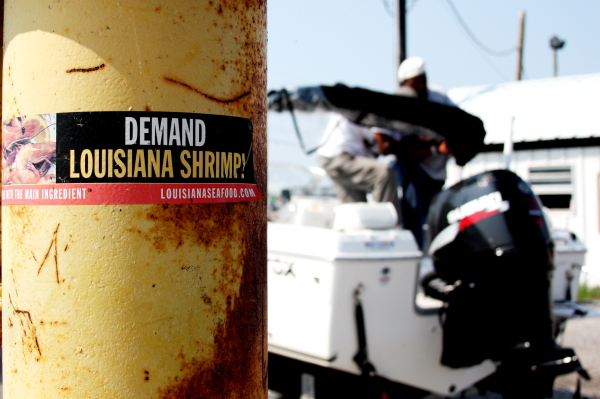 “When you think of all the news you’ve seen about Louisiana, what images flash through your mind?” asked Mike Voisin, a seventh-generation Louisiana oysterman. Voisin, the CEO of Motivatit Oysters, paced around the air-conditioned conference room as he spoke to his visiting guests.
“When you think of all the news you’ve seen about Louisiana, what images flash through your mind?” asked Mike Voisin, a seventh-generation Louisiana oysterman. Voisin, the CEO of Motivatit Oysters, paced around the air-conditioned conference room as he spoke to his visiting guests.
An assortment of bloggers and food writers from across the States–hand-picked to observe Louisiana’s seafood industries and partake in the state’s diverse food culture–sat around the conference room table conjuring up images: submerged homes, flood-stranded dogs, desperate men and women on rooftops waving white sheets for help, oil-slicked wildlife, and tar-soaked birds.
“We are not what the perception of what the media has made us,” Voisin said. Despite the fact that almost one hundred percent of the state’s fisheries are open and functioning and have passed national and state testing for health and safety, much of the seafood buying public fear the Gulf-state’s products aren’t safe to eat. According to Voisin, the unprecedented attention of the media has given Louisiana’s seafood industry a bad reputation.
“It’s kind of hard to get that image of an oil slicked pelican out of your mind when you’ve seen it a million times, isn’t it?” Voisin said. “Louisiana has a branding problem…We have shrimp, crabs, and oysters but what we don’t have are people willing to buy.”
The uniquely difficult challenge facing the Louisiana seafood industry is exactly why Louisiana Seafood Promotions and Marketing Board decided they needed to reach out to consumers in a revolutionary way–through food.
An Invitation to see the real Louisiana
When it comes to news headlines, a couple of things sell really well: natural disasters, tragic loss of life, celebrity gossip, hero stories, and adorable animals. When one single news event touches all these aspects with one soaring narrative, it’s a media goldmine.
Blame it on the perfect storm of natural disasters that’s befallen Louisiana over the past seven years, but the state has certainly been the source of a lot of headline news. With Hurricane Katrina in 2005, and Deep Water Horizon’s oil spill in April of 2010, international media teams swooped into the coastal state to document the disasters. Stories of tragedy, redemption, faith, hope, celebrity interest, and distress were easy to find in this Creole/Cajun state.
Thanks to a huge influx of money to the state of Louisiana, much progress has been made in just one year since the oil spill. Houses and businesses have been rebuilt, fisheries and rice fields are producing again, and tourism is improving (According to the tourism board, the state earned 5.3 billion dollars in tourism last year). Yet despite the positive changes and commitment to becoming a strong and successful state, Louisiana’s seafood industry is struggling.
Seeing a problem, Louisiana’s Seafood Promotion and Marketing Board did some research and quickly realized the general public couldn’t get over the horrifying images of the past so easily. So, in order to change perceptions about the seafood and motivate people to start buying Louisiana seafood again, they began devising a different sort of plan to get the word out.
Rather than coming up with slick slogans, cunning advertising, or a give away contest, the Seafood Board decided to call upon a handful of trusted voices in the food world to come and experience Louisiana from a culinary and cultural point of view. Who better to get the word out about a food crisis than a bunch of hungry and inquisitive food bloggers?
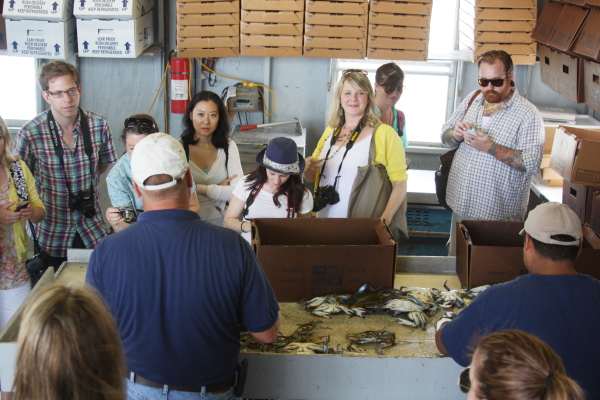
The ever-gracious Blake Killian assisted the Seafood Board to create an itinerary that included tours of fisheries and seafood processing plants, restaurants, food festivals, interviews with chefs and culinary professionals, and day trips to observe the state from a local’s point of view.
They asked people like Matt Armendariz of Matt Bites, Pim Techamuanvivit of Chez Pim, Adam Roberts of Amateur Gourmet, Maggy Keet of Three Many Cooks, and a handful of other top food voices to report back to our millions of readers just what we learned. So when Blake Killian asked me to join this incredible group, I didn’t hesitate to say yes. I was honored to be asked to attend this week-long event based in NOLA.
Post Katrina Crabbing
I flew to New Orleans for the first time. I was immediately struck by the city’s rich history and incredible culinary past. I was anxious to learn about the French-Quarter, the city’s rich past, and taste the culinary treasures of the city. After a weekend of relentless eating* the group was bonded and ready to explore the factual aspects of Louisiana seafood.
We rode west to Slidell, Louisiana where Pontchartrain Blue Crabs fisheries were located. Lake Pontchartrain was an area hard hit by Hurricane Katrina. Along with the destruction of homes, businesses, estuaries, boats, docks, and wildlife, the storm destroyed the fishermen’s only true link to income: crab processing plants.
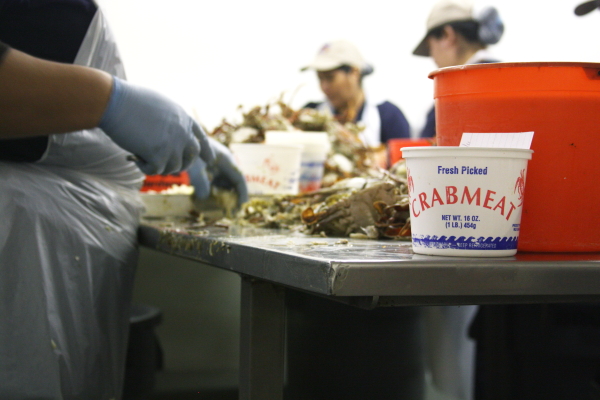
A handful of us grabbed our cameras and headed out via boat onto Lake Pontchartrain to observe a fishermen catching pots of crabs. As with any fishing endeavor, catching crabs is time a consuming and body-taxing job. There are pots to pull from the water, crabs to sort through (be careful of their claws, the really can hurt you!), and baiting to be done with each and every trap. Though the work may seem appealing for anyone who loves the sea, the only sexy thing about crabbing was the guy catching the crustaceans.
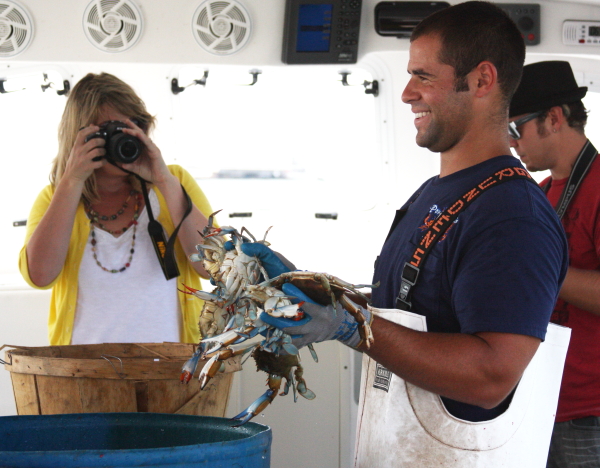
After grabbing a small pot of crabs, the group returned to see the next step in the fishing process. We were introduced to Gary Bauer, owner of Pontchartrain Blue Crabs, a no nonsense man with a thick Louisiana accent. Bauer told us how his modest processing facility was destroyed by Hurricane Katrina in 2005. The lake’s water raised up over 18 feet and washed everything away. Everything, that is, except a concrete slab.
“I built this dock around this slab, just to remind me,” he said laughing.
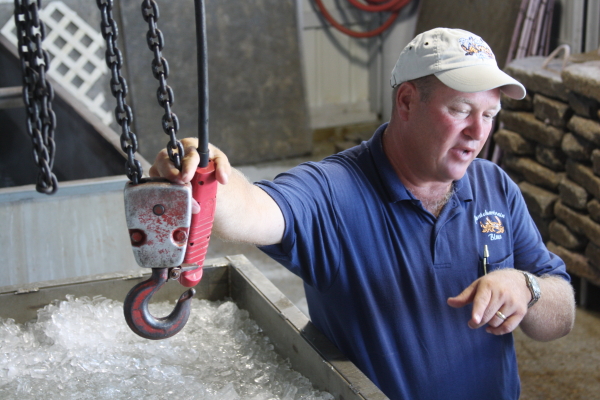
A friendly man with a clear understanding of his business’ integral role as a commercial link between fishermen, their catch, and the consumer, Bauer was compelled to quickly rebuilt his facility after the hurricane. If he didn’t rebuild, he explained, the local fishermen and crab-pickers wouldn’t have work.
“I rebuilt as soon as possible to keep my workers,” Bauer said.
It was quiet outside on the dock, save for the sound of boats pulling up to unload their catch. Before stepping through the doors into a temperature controlled processing center, we nervously chuckled and snapped photos of ourselves wearing not so flattering hairnets.
Once inside, many of us were surprised to find tables lined with men and women . There were not machines, here, only hard working men and women doing the monotonous work of cleaning each and every Lake Pontchartrain’s blue crab of its meat. There was no music or news reports playing inside the processing room. In the sterile white walled space, crab pickers pulled tiny shards of soft crab meat from cracked shells. Hardly anyone spoke as they used plastic-gloved fingers to pick out the delicate meat.
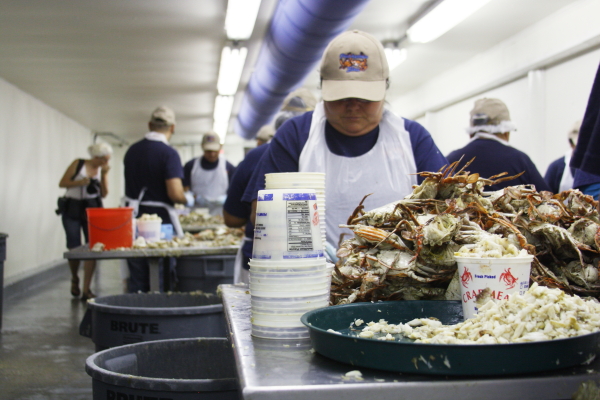
“Buenos dias!” Bauer said to his workers. They hesitantly looked up from their work. They couldn’t help but notice the flock of men and women with cameras trained on them like paparazzi. A woman with a serious face spontaneously smiled at the folly of food photographers like a movie star. The group of workers burst out laughing.
Relieved of the awkward tension, the group responded. “Buenos dias,” the workers said in a sing-song unison voice.
Once the group was outside, Bauer spoke to me about his business. “I put ads out all the time for local help,” Bauer said. “But no one in the states want to do this job.”
“Each year it gets more difficult to get government permission to bring in laborers from Mexico.” Bauer said. He currently employs workers from Mexico and other Latin American countries using the H1-B work visa program which allows U.S. employers to temporarily employ foreign workers in specialty occupations like crab picking. Bauer is proud that most of the people working in his processing plant are returning workers from other countries.
As we loaded onto the bus I felt a new kind of gratitude for every morsel of sweet crab meat I previously only appreciated for its flavor. I was attune with the cost of making a high-cost seafood item available at the market. Machines weren’t responsible for what was inside those plastic buckets. People–beautiful, hard working people with families and big dreams–were behind each and every aspect of the delicate, sweet crab meat. I felt a connection to the fisherman, the crab picker, and the committed business man. From now on–I promised myself–every bite of crab meat will come with it a promise to appreciate its history and the many hands that brought it to me.
Humble oysters
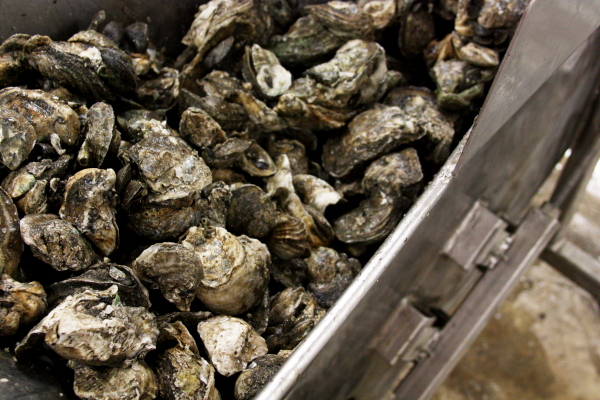
We pulled off the Delacroix Highway in Hopedale Louisiana in search of Sam Slavich, a fourth-generation oyster man who is facing another difficult year following a long string of hard times. We stepped up to the dock and went aboard his humble oyster boat. Slavich and his crew were quiet as we swarmed their boat and pointed our cameras at their weary faces. We snapped pictures as Sam described his day (it started at five o’clock that morning) and what difficulties he was facing.
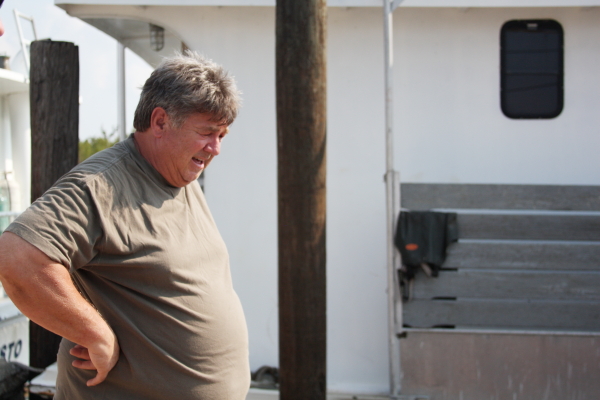
“We’ve got a few minutes before we have to unload,” warned Slavich as the sacks of oysters waited to be unloaded by three strapping teenagers with a fork lift.
Slavich explained that the recent weather disasters have significantly depleted the local bayous of their previous bounty. At its peak, Louisiana produced one-third of the nation’s raw oysters. Now, only time will tell if men like Slavich will have the chance to keep oyster farming. “It will take three years for a crop of new oysters to properly seed,” Slavich told us. Until then, Slavich and his crew will have to tough it out through the lean financial times and wait for their oyster beds to grow into a harvestable, market size. Before, the money was fine. Now, Slavich explained, there’s not much to be made.
Are the waters safe for the oysters, someone in the group asked. “Absolutely,” Slavich said. “These here are high quality cooking oysters.”
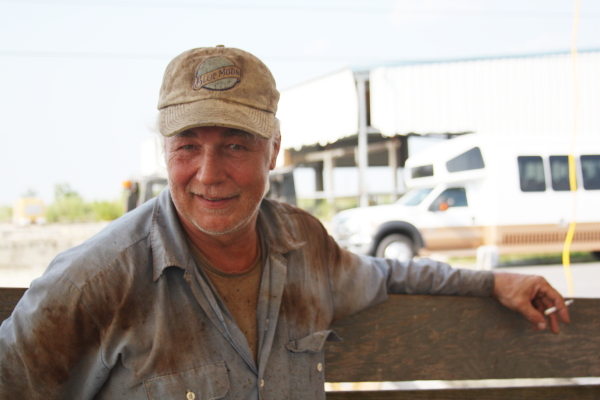
After the British Petroleum Oil Spill
The next day we took a two hour drive outside of New Orleans to visit Motivatit Seafood–the company known as Gold Band Oysters around the world–processing plant in Houma, Louisiana.
Once we stepped off the bus into the blazing heat of Louisiana, the group was lead to a chilly conference room at the heart of the Motivatit oyster processing plant. Mike Voisin, the CEO of the company and seventh-generation oyster man, didn’t waste much time getting to the heart of his story.
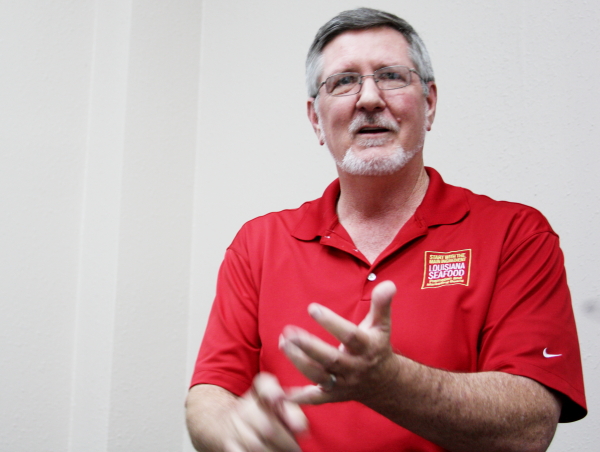
This was his family’s business–eight generations’ worth–of men and women who have built a business around Louisiana’s rich natural resources. Of the many family members working for the company, Mike introduced his son Kevin and his daughter’s husband, Jason Gilfour, to the group.
The Voisin family’s oyster farming lineage includes Mike’s father whose love for invention lead him to invent a system that revolutionized oyster processing. Through much trial and error, Mike Voisin’s father invented a machine that uses a high pressure water system to clean the exterior of oyster shells and consequently kills spoilage bacteria (giving it 7-14 more days of shelf life) and shucks the oyster in one fell swoop.
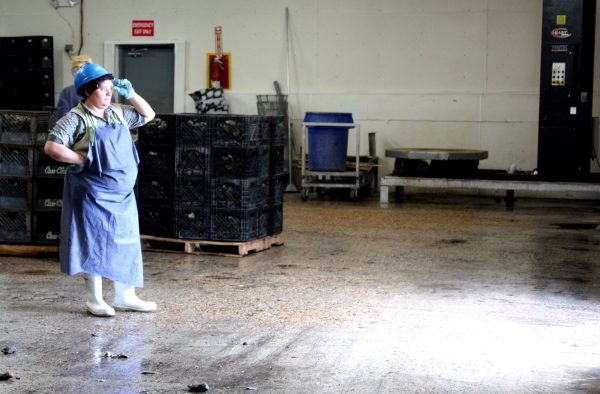
Technological progress aside, Louisiana’s oyster industry is struggling. Since the oil spill, Louisiana’s oyster production fell 50 percent. As a result, Voisin’s family business lost 40 percent of its revenue. The company had to let go of about 30 processing employees and 40 to 60 boat captains and deckhands.
Beyond the physical effects of hurricanes and oil spills, people like the Voisin’s are fighting hard to assuage consumer fears about their products.
What are the risks?
According to reports, scientists from NOAA and EPA have done two-tiered tests (sensory and chemical testing for hydrocarbons) and have found Louisiana oysters to be safe for eating. According to many in the seafood industry, including Dr. Jimmy Guidry a Louisiana State Health Officer, oysters have received more testing for hydrocarbons now than ever before in the history of Louisiana. Louisiana will use $18 million from oil company BP to test 400 samples a month for the next 20 years to step up testing and monitoring Gulf seafood .
“People don’t want to believe what the government says, when they say that everything is alright,” said Kevin Voisin, a Marketing manager at Motivatit. “People understand when there’s something wrong.”
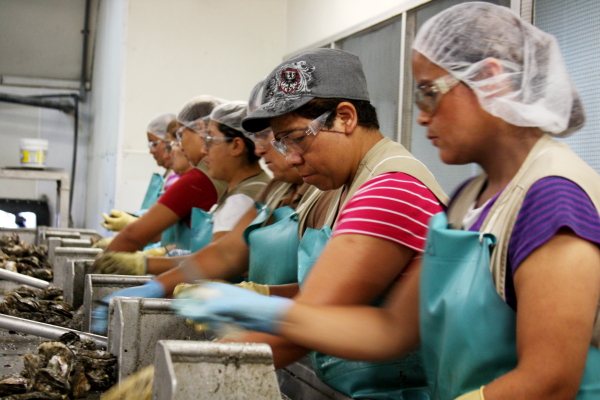
Much of the devastation that rocked Louisiana continues to threaten the livelihoods of many within the state. Yes, billions of dollars have been spent rebuilding, cleaning up the oil spill, and getting families and businesses on track. But Louisiana’s brand has definitely been tarnished.
Chef Brian Landry of the Louisiana Seafood Promotion and Marketing Board noted that once people see Gulf seafood and taste it for themselves, they understand just how good it is. “Putting a plate of seafood in front of someone goes a long way toward changing minds,” said Landry.
As a food lover and health advocate, I definitely had my concerns about the safety of Louisiana’s seafood. In going to Louisiana I was given a much better understanding of the place, the people, and the history of this historic culinary destination. Honestly, when I was invited to attend this trip, I had no idea I’d be introduced to so many culinary professionals and be given unlimited access to the humble men and women of Louisiana’s seafood industry.
From the struggling oyster farmer, the handsome crab fisherman, the helpful server in a tiny neighborhood diner, to the outspoken businessmen–each and every person had a story to tell about the importance of Louisiana’s food culture. I can honestly tell you based on what I observed is that Louisiana is not only producing healthy agriculture and farming fresh seafood, they’re doing it in a much safer way than ever before.
“That’s why we want to show you this unique place,” said Mike Voisin. “[Louisiana is] tied to its roots. It’s culture. It’s land. Our resources are rich.”
“What can you do to help the Louisiana Seafood industry,” one blogger asked. Without skipping a beat, Mike Voisin had an answer.
“Buy Louisiana seafood.”
Seeing (and tasting) really is believing.
*There were so many great eating excursions on this trip I will be writing an entirely separate post about the food. Stay tuned!
Full Disclosure: My trip was furnished by Louisiana Seafood Board. I was not paid to write or to furnish my opinions. My opinions are solely my own.

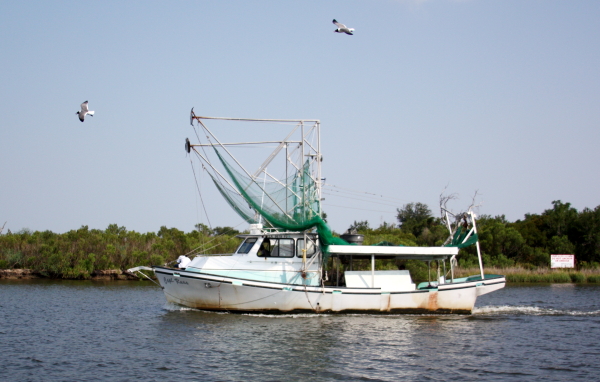
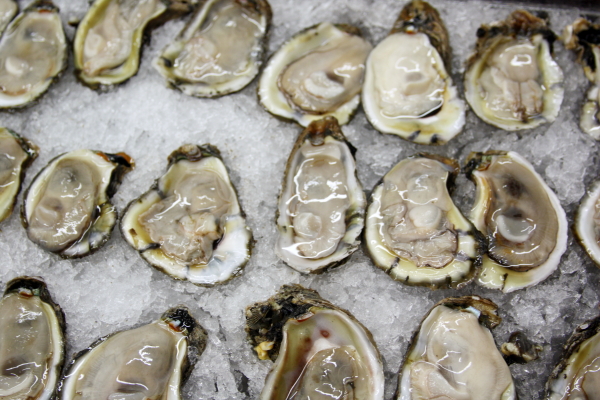
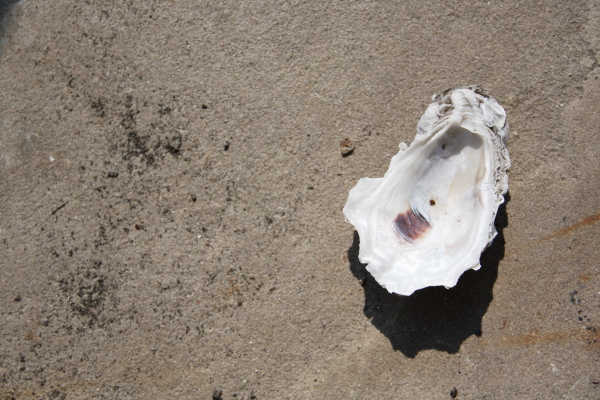
I’m a rare seafood eater and even then a picky one. But my family comes from the coastal region of Goa in India and I remember through numerous vacations there just how much everything people are and do there is tied to the sea. The devastation in Louisiana must have been bad enough to deal with but these continuing trials are something no one sees or hears about.
Thanks for this detailed, in-depth insight into Lousiana today. For what little contribution I make to their industry, I’m now aware enough to actively look for seafood from Louisiana.
I am now in the Florida Panhandle living on 30A, but many years ago lived next door to Mike Voisin and his family in Houma. I really enjoyed your piece and the incredible attention to detail you shared with your readers. Thank you!
Susan @ 30AEATS
Hi Brooke!!
Thank you for this wonderful post on what is really going on with Louisiana seafood!! It is a great lesson on the responsibility that journalists have to present objective information – as you saw firsthand in Louisiana, the media did a huge disservice to not only the people of Louisiana but to all Americans by not reporting (or undereporting) the recovery of the seafood industry in Louisiana.
I am so glad that the “good news” about Louisiana’s seafood is getting out there and that the hard work and dedication of these people to their business is being recognized!!!
Can’t wait to read more about your adventures in NOLA!!!
Great post! I went to Louisiana to do disaster relief after Katrina. So happy to see how well the seafood industry has recovered since then.
What an opportunity of a lifetime to go and visit these ‘factories’ and see how this delicious seafood is processed – by hand. Loved the fact that the oyster man was seventh generation – wonderful that in New Orleans do you get such rich history.
This read like a great chapter. A really good read. Glad to see the area and this industry rebounding and posts like this will only help to strengthen that image.
It looks like it was such an incredible trip -thanks for the informative post!
Great post with even greater purpose. You’re doing wonders to revive a true American treasure – Louisiana Seafood. As always, thank you for the thoroughness and combating the misrepresentations by the press.
M®
Thanks Mike! I’m honored I got a chance to go and see what’s going on for myself.
Fantastic post. Informative, insightful, and inspiring. Keep bringing us along on your journeys.
Read this before you eat anything. Remember the goverment local, state and federal lies to you!!!http://www.thenation.com/article/167461/investigation-two-years-after-bp-spill-hidden-health-crisis-festers